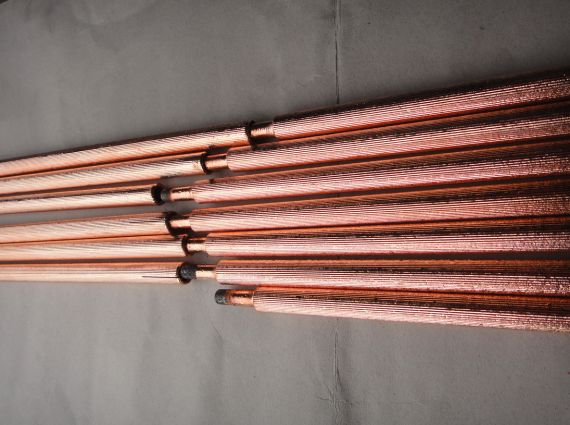What is the effect of current polarity (DC positive/reverse) on the surface quality of the groove and carbon rod loss?
In carbon arc gouging, the current polarity (positive/reverse connection of DC) has a significant effect on the surface quality of the gouging groove and the loss of carbon rods, as follows:
Positive connection of DC (the workpiece is connected to the positive pole and the carbon rod is connected to the negative pole)
Surface quality of gouging groove: When positive connection of DC is adopted, the arc is concentrated on the surface of the workpiece, and the heat is relatively concentrated, which can make the metal melt quickly. Therefore, the shape of the gouging groove is relatively regular, the groove wall is relatively smooth, and the surface roughness value is low. At the same time, since the heat is concentrated on the workpiece, the heat-affected area of the workpiece is relatively small, which is conducive to reducing the deformation and structural changes of the workpiece caused by overheating, thereby improving the surface quality of the gouging groove.
Loss of carbon rod: In the case of positive connection of DC, the carbon rod is the cathode. The cathode emits electrons, its own temperature is relatively low, and the ion bombardment is weak. Therefore, the carbon rod has a slow loss rate and a relatively long service life. This not only reduces the consumption cost of the carbon rod, but also reduces the work interruption caused by frequent replacement of carbon rods, and improves work efficiency.
DC reverse connection (negative electrode connected to the workpiece, positive electrode connected to the carbon rod)
Surface quality of gouging: When DC reverse connection is used, the arc will form a large diffusion angle between the end of the carbon rod and the workpiece, making the arc heat distribution relatively dispersed. This may cause the shape of the gouging groove to be irregular, the groove wall may be uneven, and the surface roughness value is relatively high. In addition, due to the dispersion of arc heat, the heat-affected area of the workpiece is large, which is easy to cause large deformation and structural changes in the workpiece, thus adversely affecting the surface quality of the gouging groove.
Carbon rod loss: At this time, the carbon rod is the anode, and the anode receives electrons and will be bombarded by a large number of ions, with a high temperature. Therefore, the carbon rod is lost at a faster rate, and the end of the carbon rod is easily burned and becomes irregular, which in turn affects the accuracy and quality of the gouging groove. In order to ensure the gouging effect, the carbon rod needs to be replaced more frequently, which increases the use cost of the carbon rod and the consumption of working time.
Generally speaking, in carbon arc gouging, in order to obtain better gouging groove surface quality and lower carbon rod loss, DC positive connection is usually preferred. However, in some special cases, such as gouging some high-melting-point metals, in order to increase the heat and energy input of the arc, DC reverse connection will also be considered, but it is necessary to pay attention to controlling the process parameters to minimize the adverse effects on the gouging surface quality and carbon rod loss.

Contact: admin
Phone: +86-13665233012
E-mail: service@weldmaterial.com
Add: Huanghua Industrial park, Jiangdu City, Yangzhou , Jiangsu Provicne, China.